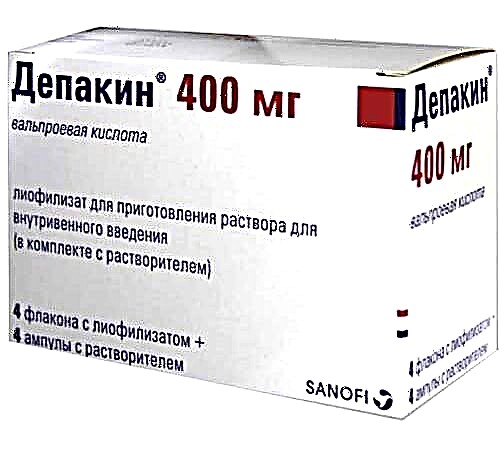Young children quite often catch colds, and any mother is very worried about her baby's runny nose. However, if a child has snot with blood during a runny nose, real panic may ensue. This phenomenon scares not only children, but even adults, but you should not get confused, you should understand the reasons why streaks or blood clots appear in the nasal mucus of the crumbs.

Sometimes children have snot with blood
Causes of a bloody runny nose
The entire nasal cavity is permeated with capillaries - the smallest blood vessels that provide tissues with oxygen and heat the air inhaled through the nose. The walls of these vessels are thin and very weak, especially in a newborn child with an incompletely formed circulatory system. For this reason, the capillaries are easily injured, which is accompanied by minor bleeding.
Until the age of 2 months, the baby's body produces an increased amount of mucus, removing which, the mother can damage the mucous membrane of the nose. In addition to mechanical damage, a runny nose with blood in a child may indicate high intracranial pressure (as a reaction to its change).
Of the external causes of this unpleasant phenomenon, pediatricians point to dry air in the room where the baby is, which dries up the walls of the nostrils.
Features of the occurrence of bloody snot in infants
A runny nose, or rhinitis, occurs in children of different ages. The peculiarity of newborns and children under one year old is that their capillaries are more delicate and sensitive, prone to damage. At the same time, a baby's nasal passages clogged with mucus have a bad effect on his well-being and comfort - they do not allow him to fully suck on a breast or bottle and sleep peacefully. As a result, the child is capricious, his appetite is lost.
In addition, babies are susceptible to the development of bacterial infections, which easily penetrate through small wounds and cracks in the nasal cavity. If you do not take action, it can lead to serious health problems, up to pneumonia.
Blood rhinitis of different color and consistency
Detachable from baby spouts varies in color and consistency. In addition to liquid nosebleeds (rare in babies), babies have thick snot streaked with blood. If the bloody mucus has a greenish tint, this indicates a beginning rhinitis of bacterial etiology.

Green snot speaks of a bacterial rhinitis
A thick layer of bloody "boogers" can appear when the baby's immunity decreases, accompanied by vitamin deficiency.
When an infant gets from heat to cold, as well as sharp changes in atmospheric pressure (during flights and changes in weather), the child has liquid nozzles with pink blood, since very thin capillaries narrow, cannot withstand and burst.
Inflammatory diseases of the sinuses
Quite often, a bloody runny nose is caused by acute respiratory and viral infections.
Note! Such inflammatory diseases not only fill the nose with snot, but also significantly increase the fragility of the capillaries.
The yellow color of the discharge is given by the mass of dead white blood cells. The higher the viscosity of the substance, the stronger the inflammatory process occurring in the body.
Among the most common inflammatory diseases of the sinuses are:
- sinusitis (damage to the maxillary sinuses);
- frontal sinusitis (problems with the frontal sinuses);
- ethmoiditis (inflammation of the nasal bone mucosa);
- sphenoiditis (runny nose has affected the sphenoid sinuses).
All of them are included in the group of sinusitis. Their symptoms are similar: congestion in one or both nostrils, accompanied by loss of smell, as well as pain in the forehead, ears and nose bridge area.
If a newborn or monthly baby is diagnosed with sinusitis, a foul-smelling discharge from the nose can be either purulent or serous, or completely transparent with bloody streaks.
Dry mucous membranes
The cause of the appearance of microcracks on the nasal mucosa in an infant may be overdried air in the apartment due to the increased temperature. Then, when cleaning the nose or blowing your nose with snot, a small amount of blood may be released.
Additional Information. This situation develops quite often with the beginning of the heating season.

Dry air can be the cause of microcracks in the nose.
Most vasodilating nasal drops and many popular folk remedies (salt solution, onion juice, garlic, and others) can also dry out the inside of the nostrils.
What does the green color of the crusts mean?
Green blood snot in a child may appear as a result of the development of inflammatory processes in the baby's nasopharynx, they may have a yellowish tint. Pediatricians explain why this happens: fluid collects in the sinuses and inhibits the restoration of the delicate mucosa.
Greense or yellowish crusts indicate the presence of diseases such as:
- sinusitis;
- sinusitis;
- flu and other viral infections, to which a bacterial infection joins.
The thicker the discharge from the baby's nose, and the more blood streaks in it, the more the disease is started, and the weaker the network of capillary vessels.
This situation requires the intervention of a pediatrician and an otolaryngologist to prescribe adequate treatment, since a nose clogged with viscous snot does not allow the baby to sleep normally and suck a breast or a bottle, he becomes irritable or whiny.
Important! Sometimes, white blotches can come out of the nose along with bloody snot. This is pus, which indicates that foreign objects have entered the nasal passages. Parents need to seek help from specialists as soon as possible, since it is unlikely that they will be able to clean their nose on their own.
What to do if a child has bloody snot
The situation when a child blows his nose with blood requires an early solution. Of course, this is not a life-threatening disease, but evidence of negative processes taking place in the baby's body.
First of all, it is necessary to determine the cause of the appearance of blood clots in the discharge from the nose: fragility of blood vessels, dry mucous membranes, high blood pressure, or the wrong medicines.
When rhinitis is confirmed, the mucous membrane should be strictly moistened with oil drops, which envelop the dried inner surface of the nasal passages and contribute to its hydration and simultaneous regeneration and healing of cracks. Rosehip and tea tree oils work well.

Tea tree oil helps with a runny nose
If the baby has increased fragility of blood vessels, these disorders are stopped with a course of ascorbic or aminocaproic acid, which also prevent nosebleeds.
Traditional methods include rinsing the nose with decoctions of medicinal plants (this is rosehip, chamomile, calendula, linden, raspberry). A mixture of beet juice and honey works well, as well as St. John's wort oil.
Medicinal medicine suggests treating a runny nose with blood such drugs as, for example:
- No-Salt;
- Physiomer;
- Aquamaris.
No-Salt is produced on the basis of sodium chloride with increased osmotic activity. It moisturizes the mucous membrane rather quickly and removes dry crusts and mucus deposits. It is also effective against allergens and bacteria that cause runny nose in children. The drug is prescribed for babies over 2 years old at a dosage of 2 drops 3 times a day. A contraindication is sodium chloride allergy.

Drops and spray No-Sol
Physiomer Nasal Spray helps to treat diseases of the nasal cavity and pharynx, removes inflammation and mucus and maintains a healthy mucous membrane. It is used for children after two years from 2 to 3 times a day, depending on the degree of the disease.
Aquamaris nasal drops, created on the basis of purified seawater, help to effectively cleanse the nasal passages of bloody mucus, eliminate yellow discharge, and also easily blow your nose. In addition, this drug helps to increase the local immune defense of the nasopharynx and relieve swelling. Apply it for a week, a couple of drops in each nostril, three times a day. Aquamaris is prescribed for children after one year.
When to see a doctor
When the child's condition does not inspire concern (nasal breathing is not difficult, the snot is not viscous, and it is easy to blow your nose), if you see several streaks of blood in the mucus, you should not run to the pediatrician. In this case, several washes a day with saline or an analogue of sea water are enough, and you also need to water the baby abundantly.
In case of thick and viscous snot, difficulty breathing, headache or ear pain, cramps in the eyes, it is necessary to visit a pediatrician, make an X-ray of the sinuses and prescribe adequate treatment (antibacterial drugs, antihistamines, sprays for vasoconstriction, physiotherapy). In severe cases, surgical treatment is performed in the form of sinus punctures.
Important! If snot streaked with blood in a child is caused by a pathology of the mucous membrane or its injury, a visit to an otolaryngologist is necessary, it is not recommended to do anything on your own.
Preventive measures
The best solution to the problem is prevention. To do this, it is necessary to increase the immunity of the crumbs to prevent colds. The child should be taught to blow his nose correctly so as not to injure the mucous membrane.
It is imperative to wet clean the baby's room and humidify the air with household humidifiers or wet towels on batteries.
Do not panic when blood appears in the baby's nose, you need to understand the reasons: it can be dry air, mucosal injuries, inflammation or intracranial pressure. The situation is successfully corrected with appropriate treatment or folk remedies.



